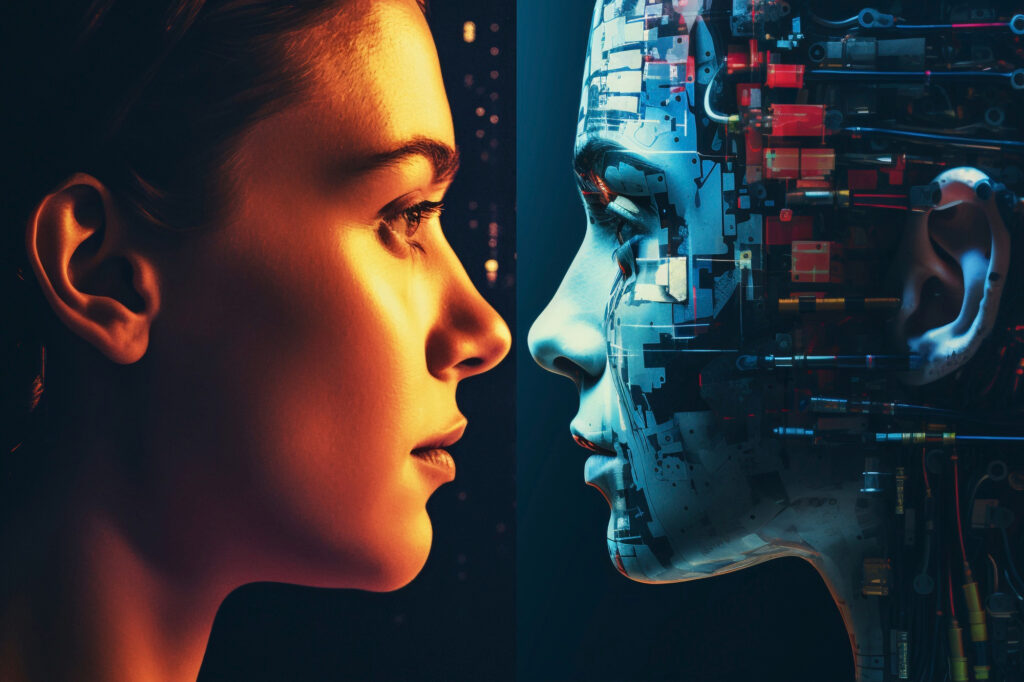In an era dominated by technological advancements, the ethical implications of programming racial biases have come to the forefront of societal discourse. This is even more true for AI image generation.
As algorithms increasingly shape our daily lives, from influencing hiring decisions to determining criminal sentencing, the presence of biases within these systems has raised concerns about fairness, equity, and justice. This article delves into the multifaceted nature of programming bias, exploring its origins, manifestations, and far-reaching consequences.
From the influence of biased training data to the inadvertent perpetuation of societal prejudices, the complexities of programming bias require careful examination and proactive mitigation strategies. By shedding light on this pressing issue, we aim to foster a deeper understanding of the ethical challenges inherent in technology and inspire collective efforts towards building more equitable and inclusive digital ecosystems.
Table of contents
What is AI Image Generation?
AI image generation, also known as generative adversarial networks (GANs), is a revolutionary technology that involves training computer algorithms to create realistic images. It works through a process involving two neural networks: the generator and the discriminator. The generator network generates fake images from random noise, continually improving its output based on feedback from the discriminator.
The discriminator network evaluates the images produced by the generator, distinguishing between real and fake images and becoming better at it over time. Through adversarial training, both networks iteratively improve their performance, with the generator aiming to produce images indistinguishable from real ones, and the discriminator aiming to accurately classify between real and fake images.
Ideally, this training continues until the generator produces images so realistic that the discriminator cannot effectively differentiate between them. AI image generation has a wide range of applications, from art generation and image enhancement to deepfake creation, spanning various industries such as entertainment, healthcare, and manufacturing. Despite its advancements, challenges such as generating diverse and high-quality images, avoiding biases, and ensuring ethical use remain pertinent. By understanding its workings and applications, we can harness its potential for positive advancements while addressing its challenges responsibly.
The Concerns
While AI image generation can be very useful in various fields and applications, it can also have many negative consequences.
Perpetuation of Racial Biases
AI image generation, while offering exciting possibilities, raises significant concerns, particularly regarding racial biases. One of the primary concerns is the perpetuation of existing biases present in the datasets used to train these algorithms. If training data is not diverse or representative, AI models can inadvertently learn and reproduce biases, leading to the generation of images that reflect and reinforce societal prejudices. This can result in the overrepresentation or underrepresentation of certain racial groups, contributing to stereotypes and discrimination.
Distortions
Moreover, AI image generation can amplify historical inaccuracies and distortions, especially when depicting historical figures or events. By inaccurately representing historical figures as belonging to different racial groups, AI-generated images can undermine the integrity of historical narratives and erase the experiences of marginalized communities.
Lack of Diversity
Additionally, the lack of diversity in tech teams and the oversight of AI development processes can exacerbate racial biases in AI image generation. Without diverse perspectives and rigorous evaluation mechanisms, developers may overlook or underestimate the impact of biases in their algorithms, perpetuating inequalities and discrimination.
Addressing these concerns requires a concerted effort from both tech companies and policymakers. It involves diversifying datasets, implementing bias detection and mitigation techniques, promoting diversity in tech teams, and fostering transparency and accountability in AI development processes. By addressing racial biases in AI image generation, we can work towards creating more inclusive and equitable technologies that benefit all users.

What it Means for the Future
AI image generation stands at the forefront of technological innovation, poised to play a pivotal role in shaping the future across numerous domains. As this technology continues to advance, its impact will be felt in various aspects of society, economy, and culture.
In the realm of creativity and entertainment, AI image generation offers boundless possibilities. Artists and designers can leverage this technology to explore new frontiers in visual expression, pushing the boundaries of traditional art forms and unlocking innovative techniques. Moreover, AI-generated content can enhance storytelling in media and gaming, creating immersive experiences that captivate audiences.
Engineering and Design
In the field of design and engineering, AI image generation streamlines the prototyping and iteration process, accelerating product development cycles and fostering innovation. From architecture and automotive design to fashion and consumer electronics, designers can harness AI to visualize concepts, optimize designs, and iterate rapidly, leading to more efficient and cost-effective solutions.
Healthcare, Education, and Services
AI image generation holds promise for advancing medical imaging techniques and diagnostic capabilities. By generating high-fidelity medical images, AI can assist healthcare professionals in detecting and diagnosing diseases earlier, improving patient outcomes and reducing healthcare costs.
It also has profound implications for education and training. Virtual simulations and interactive learning environments powered by AI-generated content can provide immersive educational experiences, allowing students to explore complex concepts and scenarios in a safe and engaging manner.
Ethical Concerns
However, as AI image generation becomes more pervasive, it also raises ethical and societal concerns. Issues such as gender and racial biases in generated content, privacy implications, and the potential for misuse underscore the importance of responsible development and deployment of AI technologies.
AI image generation is poised to revolutionize diverse industries and reshape the way we create, communicate, and interact with visual content. By harnessing its potential while addressing its challenges, we can unlock new opportunities for innovation and advancement in the years to come.
Gemini
Google’s foray into AI art with its Gemini AI tool has been marred by controversy surrounding racial biases in historical image generation depictions. The company has issued apologies for what it terms “inaccuracies” in its attempts to create a diverse range of results, acknowledging that its efforts may have missed the mark. This apology comes in response to criticism that Gemini depicted specific white figures, such as the US Founding Fathers, or groups like Nazi-era German soldiers, as people of color, potentially as an overcorrection to address long-standing racial bias issues in AI.
The Harms
The heart of the issue lies in the unintended perpetuation of racial biases through AI-generated content. While the intention behind diversifying the generated images is noble, the execution has resulted in misrepresentations of historical figures and events. By depicting historically white figures as people of color, Google’s AI art inadvertently distorts historical accuracy and erases the realities of race and gender discrimination.
Inaccuracies
The harms of such inaccuracies are multifaceted. Firstly, they undermine the integrity of historical representation, creating a false narrative that deviates from reality. Historical accuracy is essential for understanding the complexities of the past and learning from it. By presenting distorted images, Google’s AI art contributes to the erasure of true historical narratives, perpetuating misconceptions and misunderstandings.
Stereotypes
These inaccuracies perpetuate harmful stereotypes and reinforce existing racial biases. By consistently generating images that align with certain racial and gender stereotypes, AI algorithms inadvertently amplify societal prejudices. This not only affects how individuals perceive themselves and others but also perpetuates systemic inequalities by reinforcing harmful stereotypes.
The misrepresentation of historical figures and events can have far-reaching implications for education and public discourse. Students and researchers rely on accurate representations of historical events for learning and analysis. When AI-generated content deviates from historical accuracy, it hampers educational efforts and distorts public understanding of the past.
What Gemini Tells us About AI Art
The controversy surrounding Google’s AI art underscores broader concerns about the ethical implications of AI technologies. As AI becomes increasingly integrated into various aspects of society. So, it is crucial to address issues of bias, fairness, and accountability. The case of Gemini highlights the importance of rigorous testing, oversight, and transparency in AI development. This will help mitigate the risk of unintended consequences.
It is essential for companies like Google to recognize their responsibility in addressing racial biases in AI-generated content. While diversity and representation are important goals, they must respect historical accuracy and avoid perpetuating harmful stereotypes. This requires ongoing efforts to improve algorithms, diversify datasets, and prioritize ethical considerations in AI development.
Google’s AI art endeavors with the Gemini tool have sparked important conversations about racial biases in technology and historical representation. The company’s efforts to diversify generated images are commendable. However, they must be accompanied by careful considerations of historical accuracy and ethical implications. By addressing these challenges, we can ensure that AI technologies contribute to a more inclusive and equitable future.
Programming bias refers to the inherent biases present in software algorithms and systems due to the influence of human developers. These biases can manifest in various ways and have significant implications for fairness, equity, and justice in technology.

Programming Bias
One of the primary sources of programming racial biases is the data used to train algorithms. Machine learning algorithms rely on large datasets to learn patterns and make predictions. However, if these datasets are biased or unrepresentative of the population they are meant to serve, the resulting algorithms can inherit and perpetuate these biases. For example, biased training data in facial recognition systems can lead to higher error rates for certain demographic groups, particularly people of color, due to underrepresentation in the training data.
How People Contribute to Biases
Biases can be introduced during the design and implementation phases of software development. Human developers, consciously or unconsciously, may encode their own biases into algorithms. They do this through the selection of features, decision-making processes, or optimization goals.
Societal norms and systemic inequalities can influence programming biases. Pre-existing biases in society, such as racial, gender, or socioeconomic biases, can seep into algorithmic decision-making processes. This exacerbates existing disparities and discrimination. This phenomenon is particularly concerning in high-stakes applications like criminal justice. There, biased algorithms can perpetuate racial profiling and exacerbate inequalities in the legal system.
Addressing programming bias requires a multi-faceted approach that involves awareness, accountability, and proactive mitigation strategies. Developers must be vigilant in identifying and mitigating biases in their algorithms, including thorough testing, validation, and evaluation procedures. Moreover, there is a growing call for transparency and accountability in algorithmic decision-making. There are also calls for greater diversity in tech teams and increased scrutiny of algorithms. People also want the development of ethical guidelines and standards for AI development.
Conclusion
Programming bias poses significant challenges to the fairness, equity, and inclusivity of technology. We need to understand the sources and impacts of bias in programming, and take proactive steps to address them. This way, we can work towards creating more equitable and just algorithms that serve the needs of all users.
AI image generation, powered by sophisticated algorithms like GANs, represents a significant technological advancement with diverse applications. While it holds immense potential for creativity, design, and innovation, challenges such as bias and ethical considerations must be addressed. As we navigate the complexities of this technology, it’s crucial to prioritize responsible development, transparency, and accountability.
By mitigating biases, ensuring diversity in datasets, and fostering ethical guidelines, we can harness the full potential of AI image generation while minimizing its unintended consequences. Together, we can pave the way for a future where technology serves as a tool for positive change, enriching our lives and enhancing our understanding of the world.
